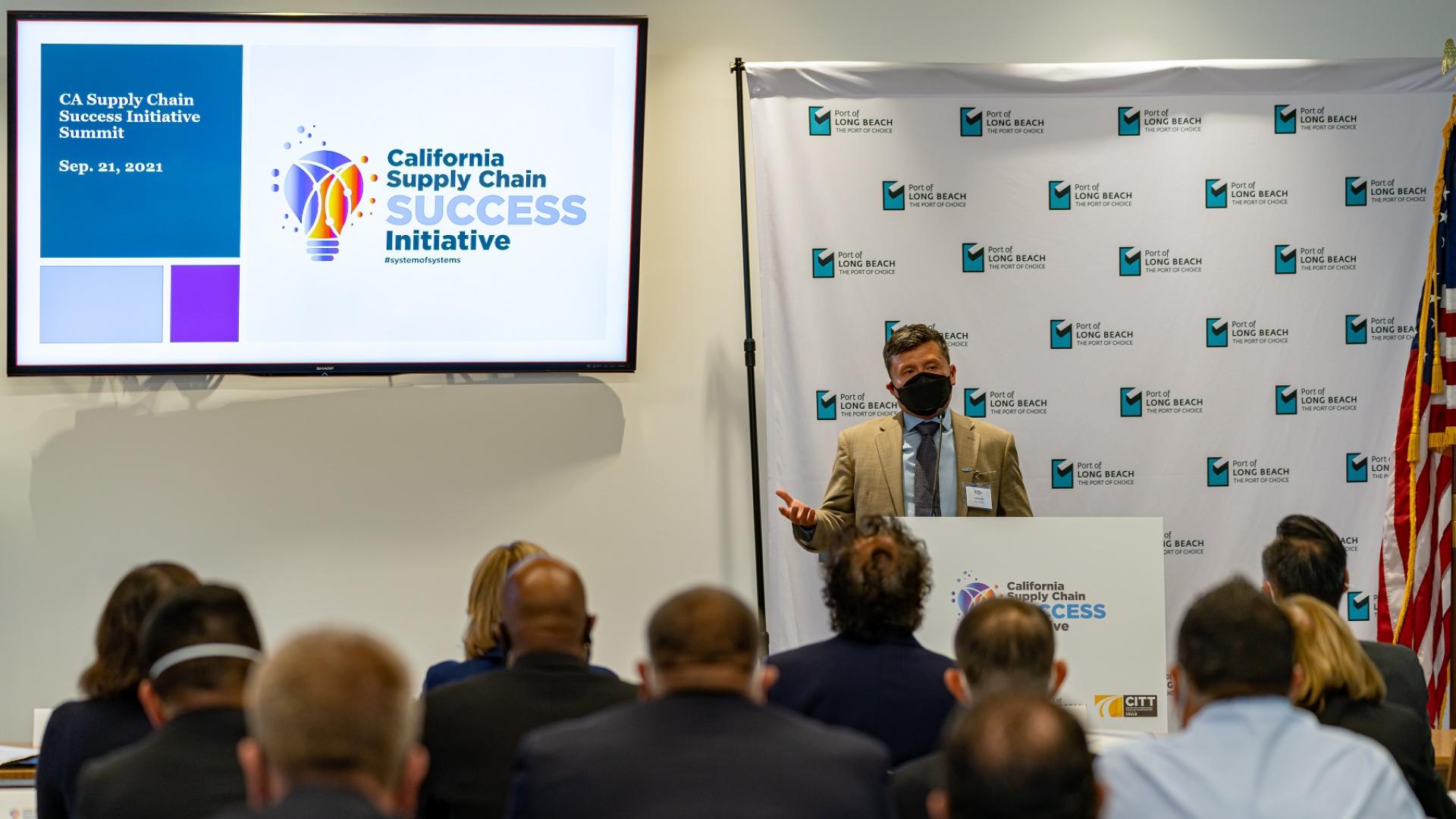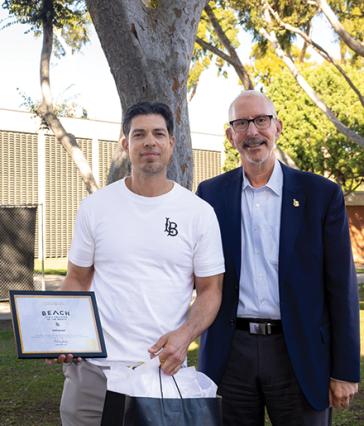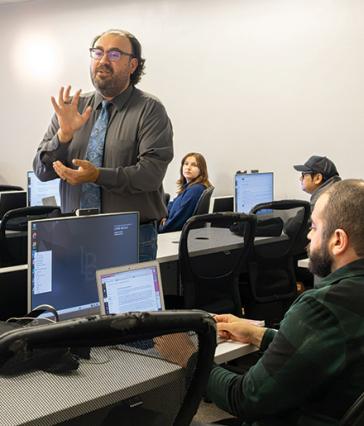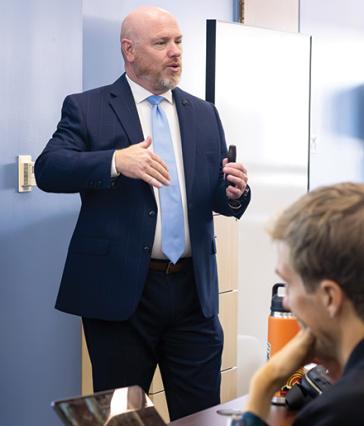How a CSULB center is helping to solve the freight transport backlog
In his two-decade career as a supply chain researcher and six years as Executive Director of the CSULB Center for International Trade & Transportation (CITT), Tom O’Brien has never seen a situation quite like the one currently mired along the Long Beach coast.

Numerous supply chain disruptions, from worker and equipment shortages to impacts from the COVID-19 pandemic, have resulted in an unprecedented backlog at shipping ports around the world – most visibly at the ports of Los Angeles and Long Beach, which manage nearly 40% of all cargo entering the U.S. The usually panoramic Pacific shoreline is choked by hulking cargo vessels, and news outlets across the country are choked by headlines about holiday delivery delays.
Now O’Brien and the CITT are at the center of the effort to solve the backlog: the California Supply Chain SUCCESS Initiative. They are also developing a comprehensive report to be released in Dec. 2021 that will document discussions between high-level stakeholders, highlight system-wide issues and recommend large-scale policy solutions.
The backlog became a national topic in summer 2021, but O’Brien and his fellow researchers at the CITT have been investigating supply chain pressure points for years. The CITT houses four major research centers which study global trade and transportation data, supply chain policy, and workforce development.
Their 8-person staff and dozen student research assistants work with partners like CalTrans, the Port of Long Beach, major universities, and the U.S. Department of Transportation to oversee a vast research portfolio, provide dozens of lauded programs and certificates for careers in global logistics, design training programs and tech support for industry partners, contribute policy recommendations, staff advisory boards, and more. As modern technology and shipping monoliths like Amazon drive the evolution of the global supply chain, they work behind the scenes to understand the systems that are being disrupted, track workforce trends, and figure out how to (literally) keep the trains running on time.
The CITT’s scope of research and position at the nexus of supply chain operations makes it an invaluable partner to legislators in Washington and Sacramento and transportation organizations seeking to fund innovative projects.
That’s how, when the California Governor’s Office of Business and Economic Development (GO-Biz) and the Port of Long Beach approached O’Brien this summer, the CITT became a lynchpin of the state’s effort to solve the growing supply chain crisis.
“We’ve advised the Port on the workforce implications of their transition to net zero, and they knew of our recent work with GO-Biz and USC to study the state’s Sustainable Freight Action Plan and develop a pilot training program to test our findings. We also host a bi-annual international freight conference, where government, private, public, and labor reps look at supply chain and workforce topics."
GO-Biz and the Port had confidence that we could coordinate a large number of stakeholders and design the project.
In the proceeding weeks, CITT, in collaboration with the Port of Long Beach, GO-Biz, and the California State Transportation Agency (CalSTA), developed the California Supply Chain SUCCESS Initiative, a multi-pronged effort to unify organizations at every link of the supply chain and guide their efforts to develop solutions to the backlog.
The Initiative would culminate in one virtual and one in-person workshop for supply chain stakeholders and a report by the CITT to serve as a guide for impacted shipping industry organizations across the U.S.
To facilitate the workshops, CITT researchers and student assistants assembled background reports and discussion topics on myriad goods-moving pressure points. They launched a social media campaign to drive awareness of the project and secure buy-in from participants.
As summer turned into fall, the urgency of the project grew. Ship after ship anchored on the horizon, disruptions increasingly plagued trade operators, and the backlog gained more and more national attention. Suddenly, a small office on campus was developing an ambitious framework to help address a global challenge, while a national narrative was developing around anxious holiday shoppers confronting the possibility that they’ll have to settle for love and togetherness this year.

The two SUCCESS Initiative workshops were held on Sept. 1 and Sept. 21, 2021, with 140 participants including senior industry and government liaisons, labor leaders, and the Port envoy to President Biden’s newly established Supply Chain Disruptions Task Force. Discussions on a range of topics elucidated the need for data standardization, the centralization of supply chain information, and stronger government relations.
Bringing representatives face-to-face and working together in a cooperative structure allowed participants to see the issues on a macro scale and hit on innovative solutions. Many participants, including O’Brien and his colleagues at the CITT, were pleased by the response.
“There were a lot of skeptics,” O’Brien said. “People said, ‘we all know what the problems are. What’s going to be different?’ But people liked the unique structure of the event, and we’re already seeing action around some of the topics that were discussed.”
The CITT’s final report on the SUCCESS Initiative will detail the findings from the workshops and recommend actions for participants in all industries to take advantage of the momentum that the Initiative has created. It will also help clear up misconceptions about the situation among the press and shed some light on the roles of the supply chain’s many stakeholders. A detailed summary of the two workshops will also be available on the CITT website by mid-November.




















